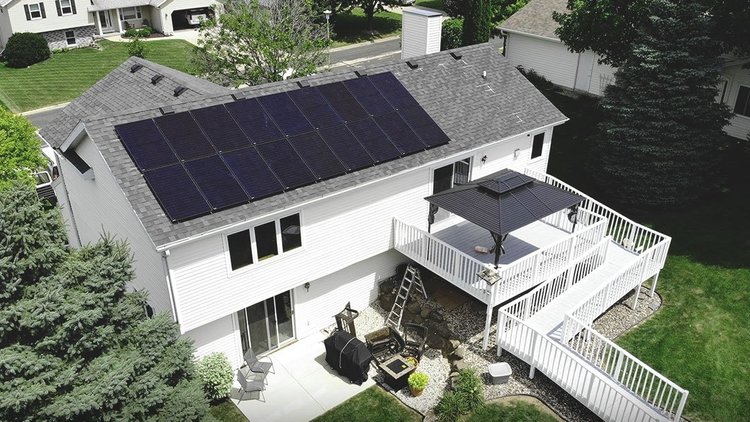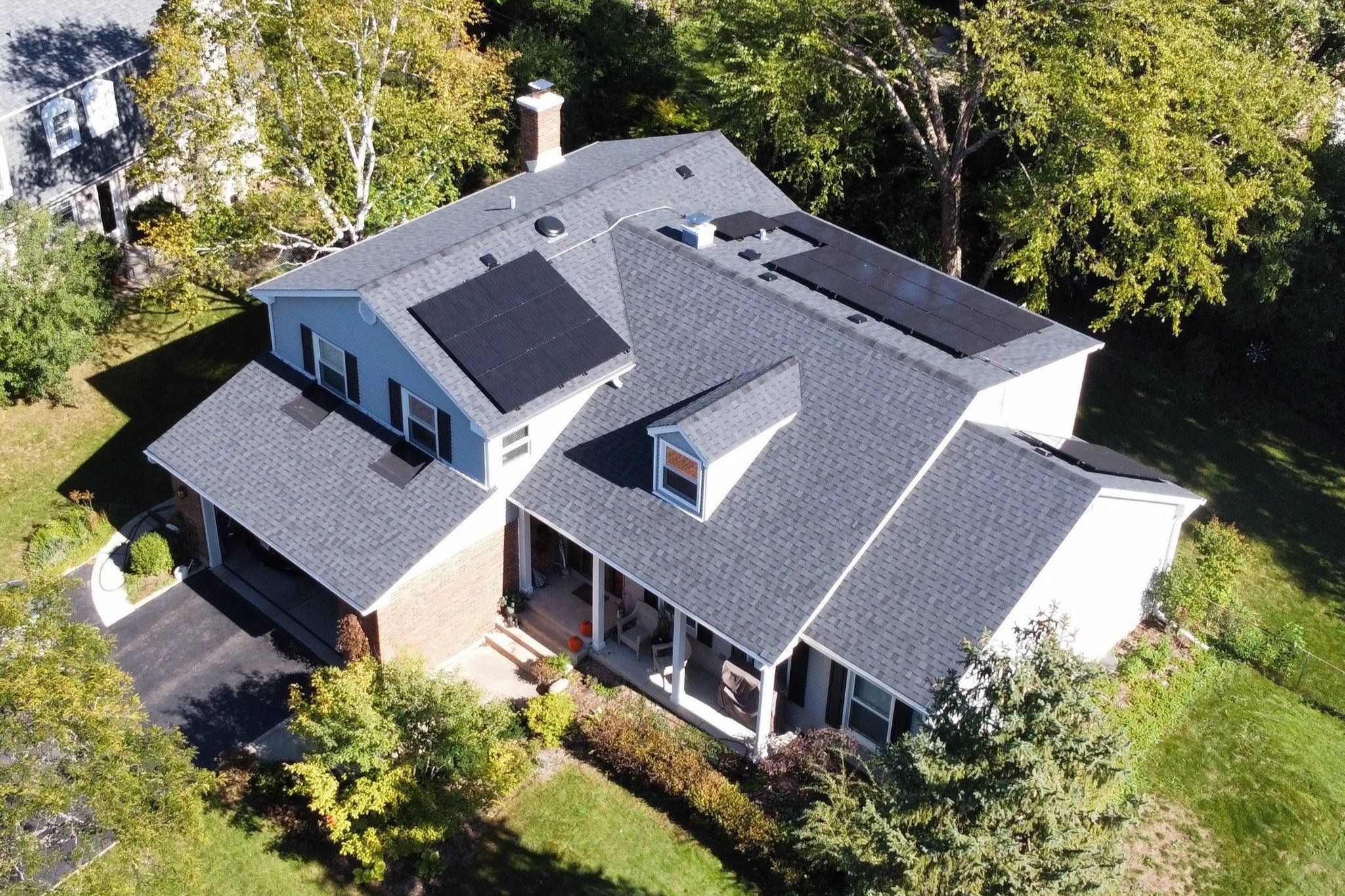Courtesy of GRNE Solar
As solar technology improves, more people are seeking out alternative energy sources. Net metering with solar makes it financially attractive—as a result, solar is starting to sing a tune that midwesterners can’t help but want more of.
Speaking with Scanifly, four solar contractors—Sam Evans, Project Manager at GRNE Solar; Shane Helle, Division Manager at Porter Electric, and Marcelo Vita, a Design Manager, and Nik Vivier, a Site Survey Manager, both at Sunbadger—explained how folks in the midwest think about solar energy today and why the natural industry evolution is perfect for the region.
Sustainably providing for yourself and your family
Midwesterners have an independent spirit and they want to be prepared for any eventuality.
Sam, who was born and raised in Illinois before living briefly in California, describes this as a “homesteading mindset,” where midwesterners value independence and being able to provide for themselves and their families. Nik, who has worked across Illinois, Iowa, and Minnesota explains midwesterners as a population who are cautious with money and who value making sensible investments that will pay off in the long term.
Solar now fits into that mindset perfectly.
Shane, who got into the solar industry in 2018, said the first movers in the midwest were those who cared about going green. They wanted to do their bit to help the environment and leave a cleaner world for their children and grandchildren while making a sensible long-term investment.
“The first movers were more the environmental stewards and/or people that just kind of geek out at new cutting-edge technology,” said Shane. “Now I see people of all spectrums of ideology going solar due to savings, and resiliency.”

Courtesy of Sunbadger
More recently, Sam said the reasons behind the increased demand for solar have shifted toward more purely financial ROI and grid independence. Whether living in a more remote area or going as far as preparation for grid collapse, more midwesterners are looking into solar systems.
A changing solar industry
As more consumers learned about solar, the industry itself improved. Marcelo noted that the price of materials and labor have both come down, making solar more affordable in the region. Nik added that the technology itself has improved as well, making the panels far more efficient than they once were.
The improvements in technology have been particularly critical in the midwest, said Nik. Given how focused people are on both long-term ROI and making sensible, sustainable investments, improved solar technology makes it all the more appealing for midwestern homeowners. Marcelo noted that solar systems also increase the value of a home, a fact that is not lost on homeowners today.
Shane also added that the sales process has been revolutionized by technology. He explained that when he first got started in solar, the typical sales motion was door-knocking and using grainy images from Google Earth to describe what a solar array might look like. Now, Shane is able to differentiate himself with Scanifly, creating crystal-clear 3D models to show homeowners what an array might look like—a far cry from both the graininess of Google Earth and the limited design potential of a hand-drawn sketch.
“Pre-COVID, it was hard to convince people and show them the potential of solar,” said Shane. “It’s a lot easier now as the technology improved, awareness went up, and technologies like Scanifly let me show my customers what a project would look like for their home.”
An energy-independent future
Looking ahead, Sam, Shane, Marcelo, and Nik see a bright future for solar in the midwest. Shane cited the new 30% federal tax incentive extension as a key driver of growth, on top of Illinois’ state-level incentives. Nik and Marcelo talked about more commercial landlords and businesses getting into solar, particularly since those businesses can use solar as a revenue-generating activity rather than simply a cost-offset.
For Sam, the big driver of the future will be battery storage. Not only is the technology rapidly improving, but it fits right into the midwestern mindset of making practical long-term investments in their own independence.
“Energy storage is the way of the future,” said Sam.






